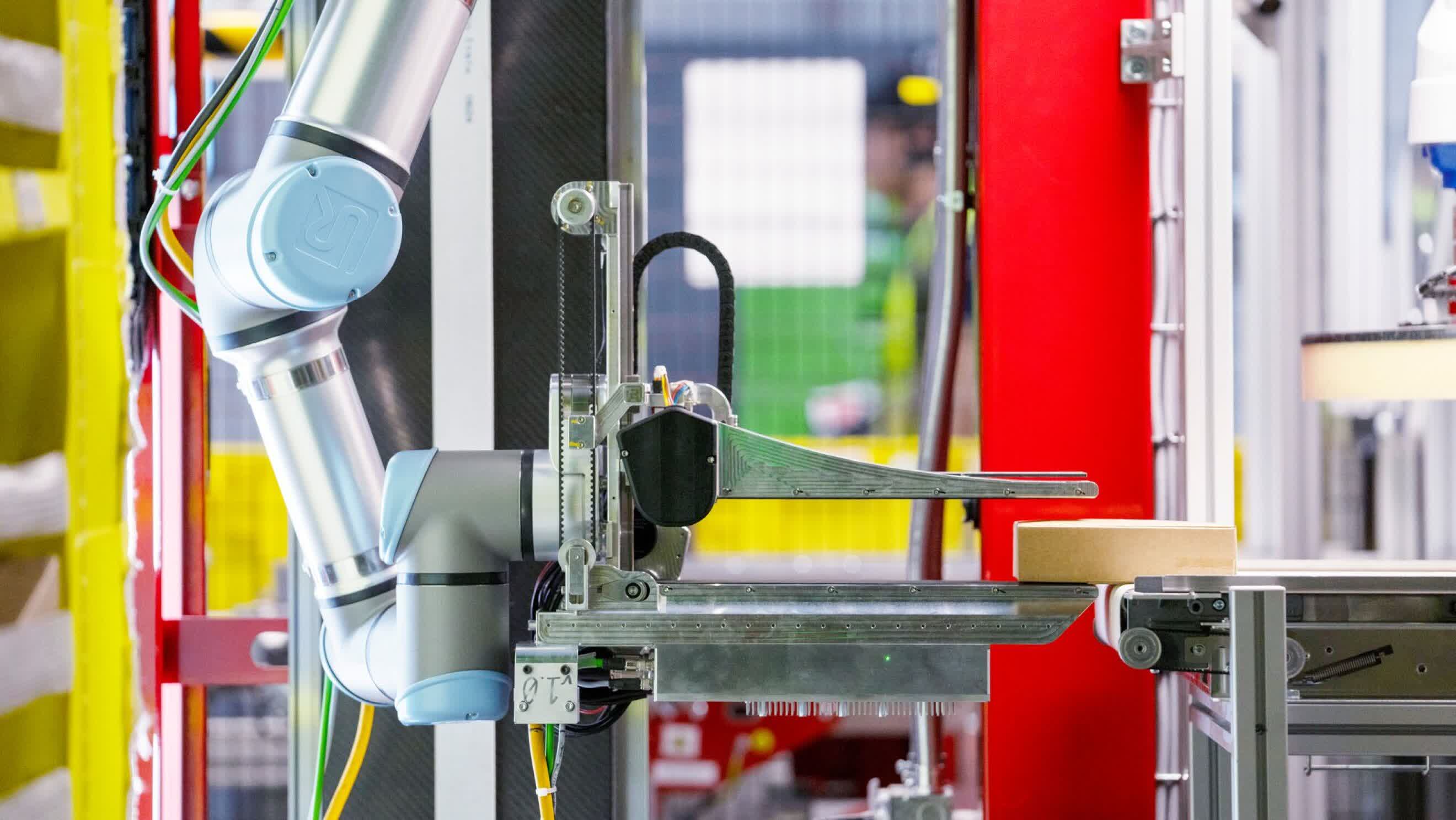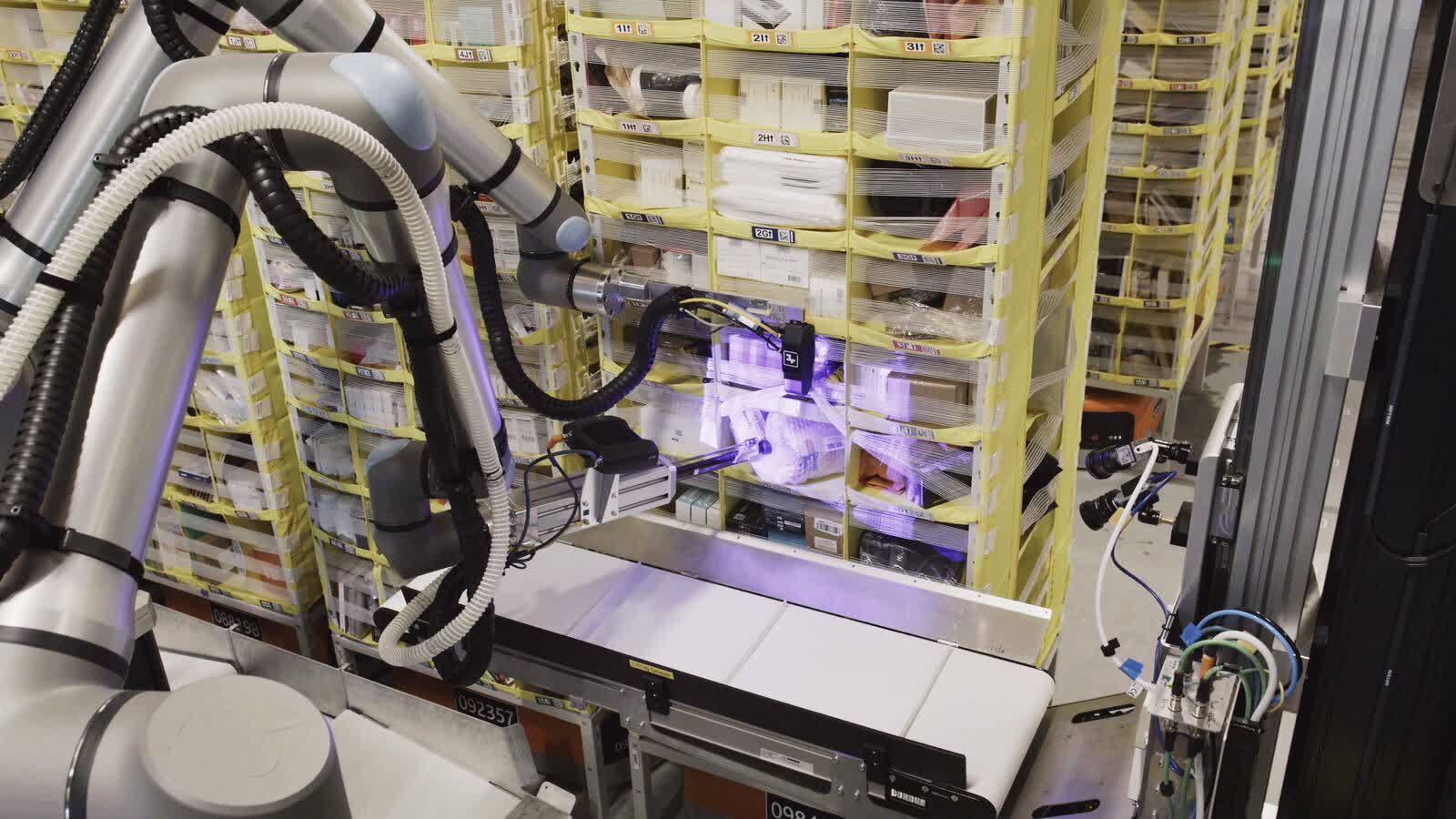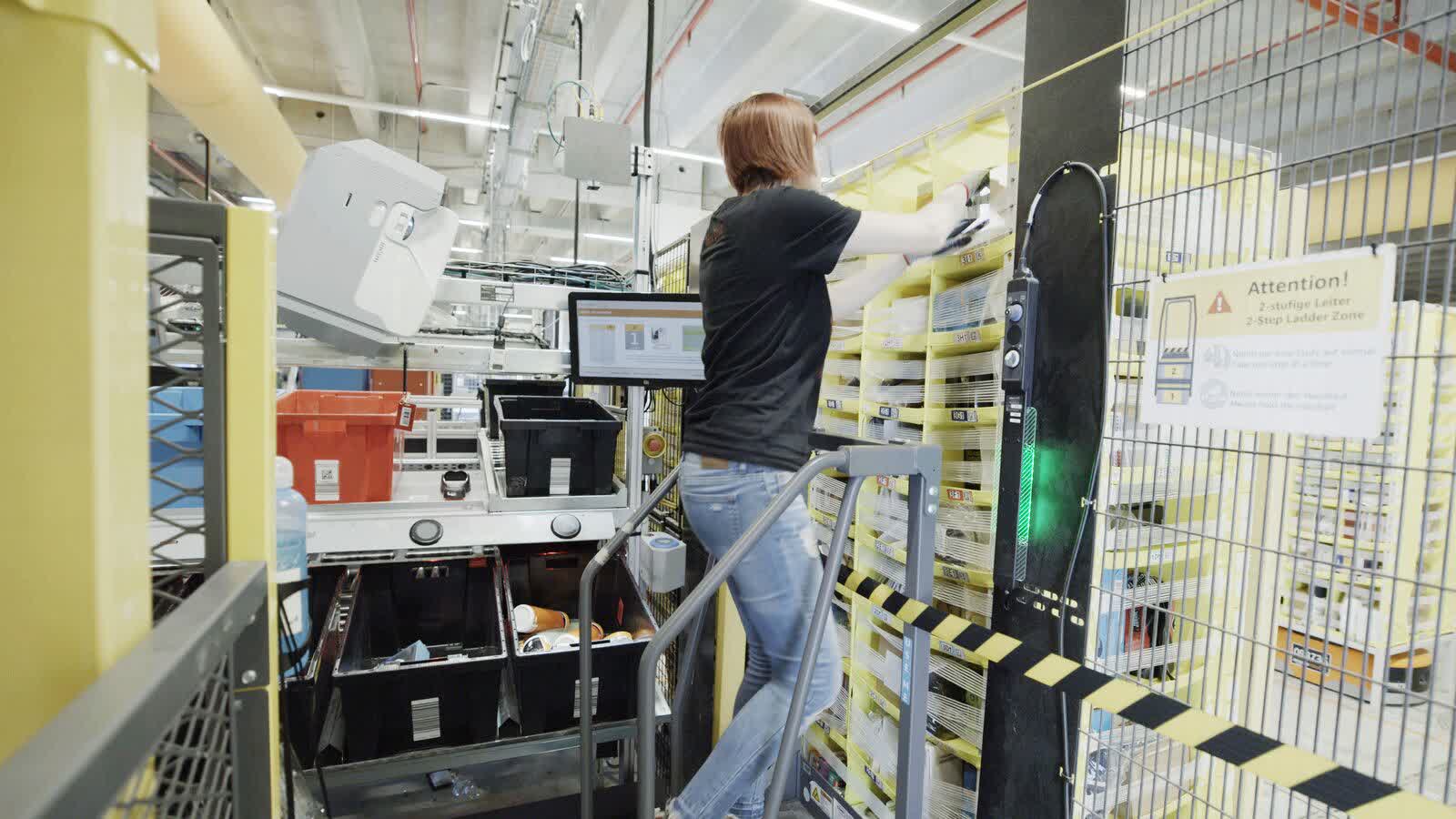What just happened? Amazon has unveiled a revolutionary new robot that has a sense of touch, which will allow it to handle around three quarters of all items in the company's warehouses at a speed comparable to humans. It's a worrying claim for the hundreds of thousands of people in Amazon's facilities, but the company is once again claiming the new robot will work alongside humans, not replace them.
 The Vulcan robot represents a "fundamental leap forward in robotics," according to Amazon. It uses a sensor, powered by AI, to essentially feel items it picks up, determining the exact amount of pressure and torque required to safely handle each object.
The Vulcan robot represents a "fundamental leap forward in robotics," according to Amazon. It uses a sensor, powered by AI, to essentially feel items it picks up, determining the exact amount of pressure and torque required to safely handle each object.
Vulcan's robotic sense of touch means it is able to pick and stow approximately 75% of the 1 million items at the Amazon fulfillment center in Spokane, Washington, where it has been deployed. The robot arms Amazon currently use in its facilities rely on cameras and suction to manipulate objects, meaning they struggle with many items, especially delicate ones.
Amazon has long said that its robots are there to perform mundane, time-consuming, and dangerous tasks. In Vulcan's case, it will be picking and stowing inventory on the top rows of inventory pods. These rows are about 8 feet high, meaning employees need a ladder to reach them.
Vulcan can also handle items stored just above the floor, which Amazon says allows employees to "work where they're most comfortable." It could also reduce the risk of injuries, something Amazon's facilities are notorious for.
Vulcan is able to manipulate items weighing up to 8 pounds. It operates behind a fence to reduce the risk of accidents involving human workers.
Amazon has increased the number of robots in its warehouses from 350,000 in 2021 to more than 750,000 today. Reports claim they could save the tech giant up to $10 billion a year by 2030, so it's easy to understand why employees are worried, especially as Vulcan is able to work 20 hours per day and at the same speed as a human.
Aaron Parness, who leads the Amazon Robotics team that developed Vulcan, told CNBC that instead of replacing people in warehouses, Vulcan will create new, higher-skilled jobs that involve maintaining, operating, installing, and building the robots. Amazon says it has spent $1.2 billion upskilling human workers since 2019.
Parness added that Amazon would never have a fully automated warehouse in the future. "I don't believe in 100% automation," he said. "If we had to get Vulcan to do 100% of the stows and picks, it would never happen. You would wait your entire life. Amazon understands this."
It's not just Amazon embracing robots that can do human jobs without salaries, breaks, or vacations. GXO Logistics, a global contract logistics company that provides supply chain services to businesses around the world, has been testing the same autonomous machines in its facilities.
Amazon unveils warehouse robot with sense of touch, raising more concerns about job losses

